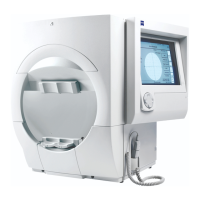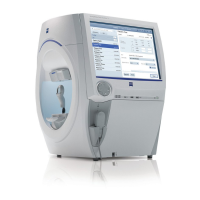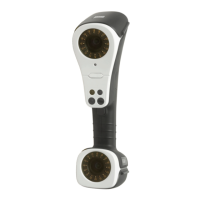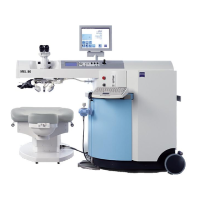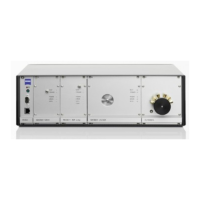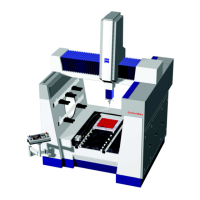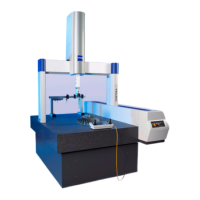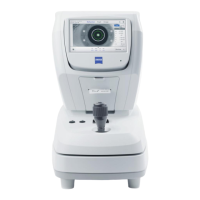Short-Wavelength Automated Perimetry (SWAP)
Humphrey Field Analyzer II-
i
series User Manual 2660021145640 A
9-2
How SWAP Works
SWAP isolates and measures Blue-Yellow ganglion cell function. The car
efully chosen bright yellow
background desensitizes the green and red cones, while having little effect on blue cone function.
The narrow-band 440 nanometer blue stimulus falls right on the peak sensitivity of blue cones. In
addition, the larger Size V stimulus is used to help expand the dynamic range of the procedure.
Thus, SWAP preferentially tests the blue cones and their ganglion cell connections.
There are at least two theories as to why SWAP provid
es earlier diagnosis. One theory suggests that
the Blue-Yellow ganglion cells are damaged selectively in early glaucoma, and thus earlier SWAP
diagnosis is just a function of testing the part of the visual system which is damaged first. A second
theory suggests that early diagnosis is achieved simply because SWAP tests one of several pathways
of the visual system; if only one pathway of the system is tested, there is less redundancy to mask
damage, allowing a loss to be discovered earlier.
Patient Selection for SWAP Perimetry
SWAP has been found to be appropriate for early glaucoma detection in:
• ocular hypertensives
• glaucoma suspects
• glaucoma patients with mild to moderate field loss.
For neurological and systemic disease:
Studies have demonstrated that SWAP testing may be an app
ropriate and useful test in various
neurological, retinal, and systemic diseases. With greater clinical experience, SWAP testing may
become the primary perimetric testing method in neurological disease; for the present, however, it
should be used as an adjunct to standard perimetry.
Patients who may not be candidates:
There are some patients who may not respond well to SWAP. These include patients with significant
catar
acts or advanced white-on-white field loss.
For additional information on the SITA-SWAP database see Appendix (K), "SITA Normative and GPA
Databases".
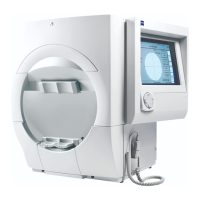
